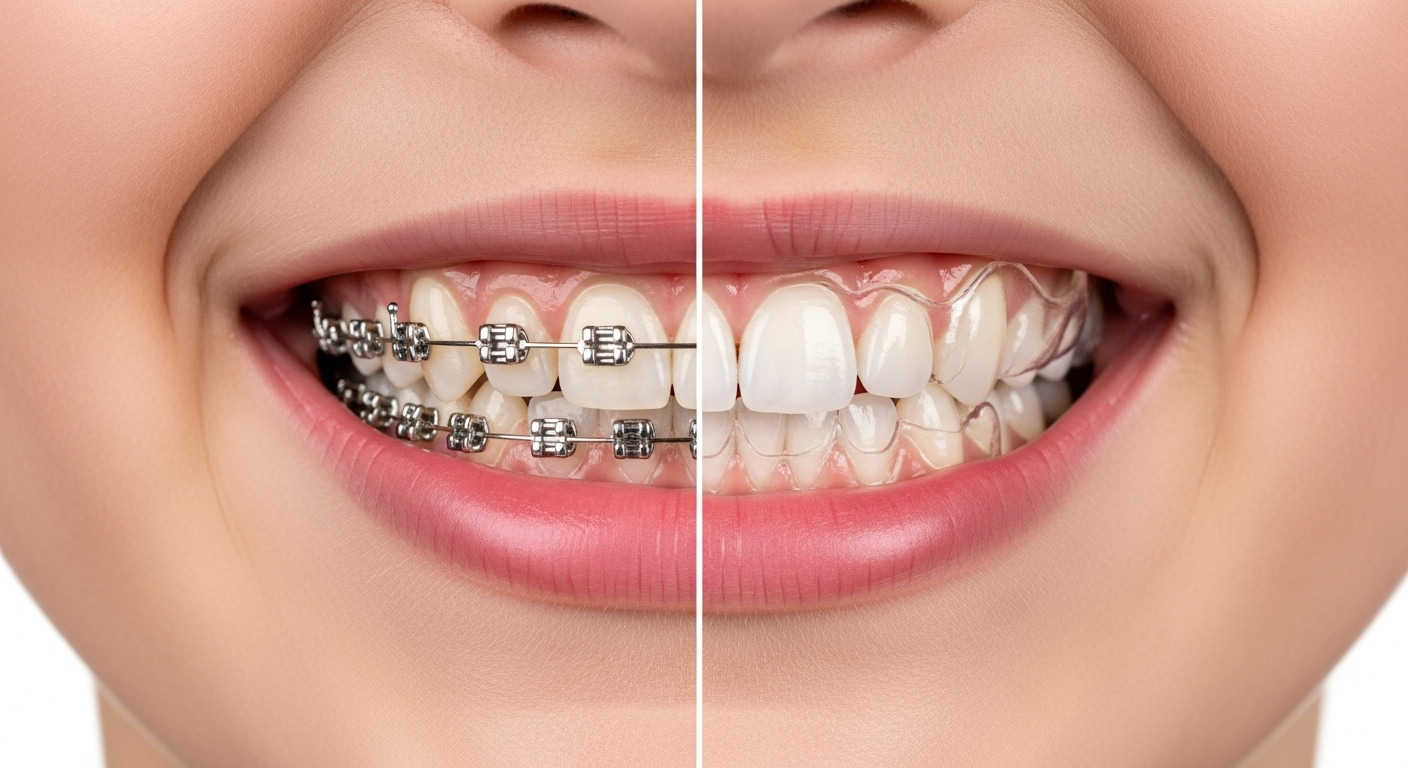Choosing an orthodontic treatment is a significant decision. For decades, traditional braces were the only path to a straighter smile. Today, modern clear aligners have revolutionized orthodontics. So, how do you decide between Invisalign and braces? This comprehensive Invisalign and braces comparison will help you find the best fit.
The Traditional Option: Dental Braces
Braces work by bonding brackets to each tooth, which are then connected by a metal archwire that applies gentle pressure to move the teeth. There are several types:
- Metal Braces: The most robust and cost-effective, but also the most visible.
- Ceramic Braces: Use tooth-colored brackets for better aesthetics but are more fragile and costly.
- Lingual Braces: Placed on the back of the teeth, making them totally invisible but the most expensive option.
The Modern Alternative: Invisalign Clear Aligners
Invisalign takes a different approach. As our guide on Invisalign clear aligners explained details, the system uses a series of custom, removable trays instead of brackets and wires. Each tray is worn for 1-2 weeks, gradually shifting teeth toward the final goal.
Head-to-Head Comparison: Key Criteria
Let's compare these systems based on the factors that matter most to patients:
- Aesthetics: Clear win for Invisalign and lingual braces, which are nearly or completely invisible.
- Comfort: Advantage Invisalign. The smooth plastic trays eliminate the metallic irritation common with braces. The answer to "is an Invisalign treatment painful?" is that it's generally more comfortable.
- Diet & Hygiene: Major win for Invisalign. Aligners are removed for meals, so there are no food restrictions. Brushing and flossing are also far easier.
- Compliance: Advantage braces. Since they are fixed, there's no forgetting to wear them. The question of is Invisalign worth it often comes down to the patient's discipline.
- Cost: Metal braces are typically the most affordable. The price for Invisalign is usually comparable to ceramic or lingual braces.
- Effectiveness: Both are highly effective. While braces are the standard for extreme cases, Invisalign's technology can now treat the vast majority of orthodontic issues.
The best treatment is the one that fits your clinical needs, lifestyle, and priorities. If discretion and convenience are paramount, Invisalign is often the top choice. For budget-conscious patients who don't mind the visibility, traditional braces are an excellent solution. Discussing these points with your orthodontist is the best way to make a confident decision.
